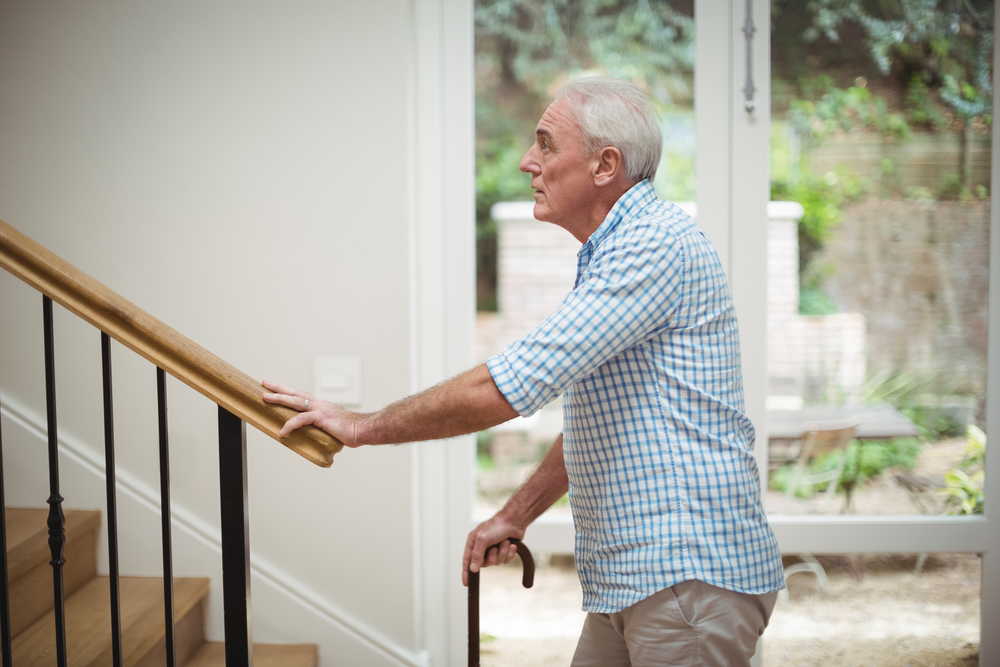Subtotal: $340

"Elderly Home Safety: How to Adapt Your Home for Aging Loved Ones"
As we or our loved ones age, making the home safer and more comfortable becomes essential. Converting your home into an elderly-friendly space ensures better mobility, accessibility, and overall quality of life. Whether you're planning to age in place or preparing your home for elderly family members, here are practical tips on how to create a senior-friendly environment.
1. Improve Accessibility Throughout the Home
A key factor in an elderly-friendly home is easy accessibility. Ensuring that pathways are wide and clear allows seniors to move around without obstacles. If possible, opt for single-level living, where bedrooms, bathrooms, and essential spaces are on one floor, reducing the need for stairs. If the home is multi-level, consider installing stairlifts or adding a residential elevator for safer access.
For homes with door thresholds, which can be tripping hazards, install ramp-like transitions or remove thresholds altogether to create smooth, level surfaces.
2. Install Grab Bars and Handrails
Bathrooms and stairways are areas where falls are most likely to occur. Install grab bars in strategic places, especially in bathrooms near toilets and showers. These bars offer stability and support, making it easier for seniors to stand or sit without losing balance.
Ensure that all handrails on staircases are sturdy and extend the entire length of the stairs. Handrails provide crucial support for elderly individuals, especially those with balance or mobility issues.
3. Non-Slip Flooring is a Must
One of the most significant risks for the elderly is slipping on smooth surfaces. Replace slippery tiles or hardwood floors with non-slip flooring materials like vinyl, rubber, or cork. You can also place non-slip mats or area rugs in places like the bathroom, kitchen, and entryways to prevent accidents.
Additionally, keep cords, wires, and loose rugs out of walking paths to reduce tripping hazards.
4. Optimize Bathroom Safety
Bathrooms are often the most hazardous room for seniors. To make your bathroom elderly-friendly:
- Install a walk-in shower or walk-in bathtub with a low threshold, reducing the risk of falls when entering and exiting.
- Use anti-slip mats in the shower and on the bathroom floor.
- Place a shower seat inside the walk-in shower, allowing seniors to sit while bathing.
- Ensure the toilet height is comfortably raised to make sitting and standing easier.
5. Adequate Lighting is Essential
Poor lighting can make it difficult for seniors to navigate their homes, especially at night. Install bright, energy-efficient lighting in hallways, stairways, and rooms frequently used by seniors. Motion-activated lights are also an excellent addition, as they automatically light up pathways when someone walks by, reducing the risk of falls.
Consider adding nightlights in the bedroom and bathroom for added visibility during nighttime trips.
6. Adapt the Kitchen for Safety
The kitchen is another area that can pose risks for the elderly. To create a more senior-friendly kitchen:
- Lower countertops or create adjustable heights for easier access to cooking surfaces.
- Organize shelves so that frequently used items are within arm's reach, minimizing the need to bend or stretch.
- Opt for appliances with easy-to-read buttons and automatic shut-off features for added safety.
Conclusion
Converting your home into an elderly-friendly space doesn't have to be overwhelming. By focusing on accessibility, safety features, and thoughtful design adjustments, you can ensure your home is safe and comfortable for seniors. Prioritizing these changes can help prevent accidents, improve mobility, and foster independence, allowing elderly individuals to enjoy their homes for years to come.
By incorporating these simple yet effective modifications, you can create a space where seniors feel secure and confident in their surroundings.
All the images used in this blog have been taken from various sources on internet.

 Velvet Teal Blue
Velvet Teal Blue





